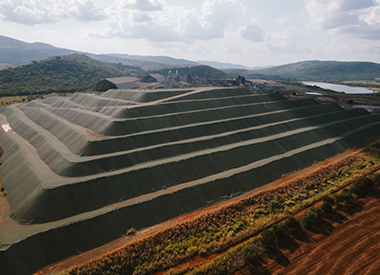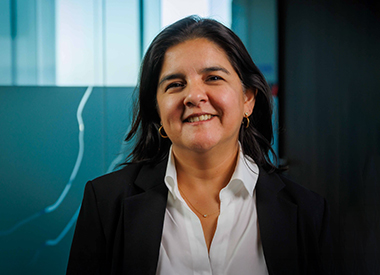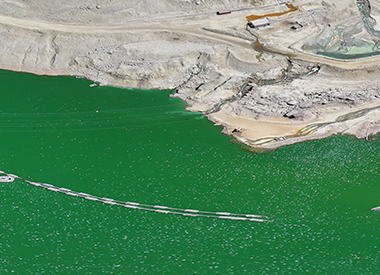Water availability is a key sustainability challenge for Chile’s copper mining industry.
Since 2010, much of the country, including the main mining regions, has experienced ongoing drought.
Although this drought was partly relieved by wetter conditions in 2023 and 2024, longer range forecasts indicate continued lower precipitation, as the effects of climate change escalate.
For Anglo American, this means adapting the design of our operations and projects so that they are more resilient to the physical impacts of climate change, both in Chile and across our operational footprint.
Ensuring a sustainable water supply for the mine – and the community
Through a series of water-efficiency initiatives, including introducing technologies such as coarse particle recovery (CPR), which allows us to optimise our use of water and energy in the processing operation, and hydraulic dewatered stacking (HDS), which permits rapid recovery of water contained in tailings for re-use in the mining process, we have reduced the intake of fresh water in our operations in Chile by almost 50% over the past decade.
Los Bronces already re-uses about 90% of the water utilised in the mining process; and the key aim of its Integrated Water Security Project (IWSP), part of the mine’s proposed expansion project, is to achieve zero intake of fresh water by 2030.
A two-phase approach
Through establishing a partnership with Aguas Pacífico, a private-sector Chilean water desalination provider, we have secured a desalinated water supply for Los Bronces from 2026 via a multi-purpose desalination plant being built by Aguas Pacífico.
In the first phase of the partnership, the plant will supply up to 500 litres per second of desalinated water to the mine from 2026. This will account for more than 45% of Los Bronces’ needs, and the mine will also provide clean water (25 L/s) to some 10,000 people in the neighbouring communities of Colina and Til Til.
The multipurpose desalination project will also provide clean water along the 100 km pipeline from the desalination plant to the mine, contributing to water security for around 40,000 people.
With construction of phase 1 already around 40% complete by the end of 2024, we are now looking ahead to the second phase. Phase 2, if approved, would see Anglo American working in conjunction with Aguas Pacífico and municipal authorities to evaluate options, ranging from increasing the use of desalinated seawater, to implementing an innovative scheme to provide desalinated water for human consumption in exchange for treated wastewater that would supply Los Bronces.
Implementation of the second phase would not only allow us to eventually stop drawing any fresh water for Los Bronces by 2030 – as per current Los Bronces commitments – but also make a significant contribution towards Anglo American reaching its 2030 target of a 50% reduction in the use of fresh water for its operations located in water-scarce regions.
Next steps
Anglo American has made a commitment to the United Nations and Chilean authorities that Los Bronces will be water resilient by 2030, through stopping the use of fresh water for mining processes.
Through the progress we have been making during phase 1 of the IWSP, we are already well positioned to achieve this goal within the defined timeframe.
With regard to phase 2, we are working closely with Aguas Pacífico and the authorities concerned on technical and feasibility studies, while simultaneously concentrating on obtaining the relevant permits timeously.




